 Over half a century of scientific research has documented that 7 universal facial expressions of emotion are expressed and recognized, all around the world, regardless of race, culture, nationality, religion, gender or any other demographic variable.
Over half a century of scientific research has documented that 7 universal facial expressions of emotion are expressed and recognized, all around the world, regardless of race, culture, nationality, religion, gender or any other demographic variable.
They are: Anger, Contempt, Fear, Disgust, Happiness, Sadness and Surprise.
But what exactly are the 7 basic emotions and where do other emotions such as shame, guilt and pride fit in? Read on to learn more…
What are Basic Emotions?
Basic emotions are a class of emotion for which there is abundant research evidence for certain characteristics, including
- Universal, underlying psychological triggers or antecedents
- Unique physiological signatures
- Pan-cultural cognitive gating
- Cross-cultural feelings and experiences
- Universal nonverbal expressions in the face, voice and body.
For discussion about other ways to classify basic emotions, read this past blog. These emotions have been scientifically proven to have a certain corresponding facial expression. In fact, developing the skill of reading microexpressions can help detect aspects of these expressions that are subtle or hard to determine.
How many basic emotions are there in psychology?
What are the Seven Universal Emotions?
Research over several decades have identified 7 basic emotions. The basic emotion of “Anger” can be recognized by this picture all around the world, no matter what age, religion or gender you are, or what language you speak and it may be one of the most important in detecting threatening behavior.
Anger can be characterized by these characteristics below:
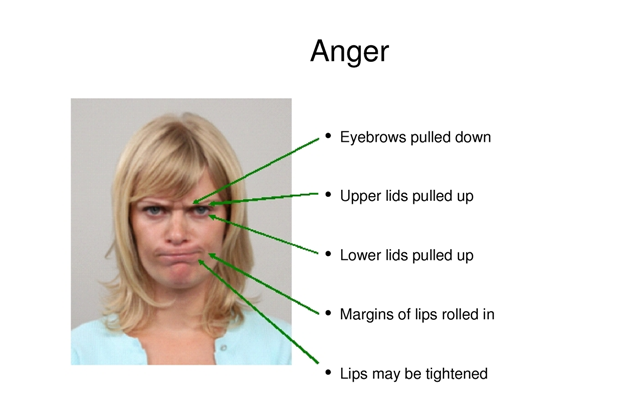
Similarly, Fear is one of the seven basic emotions. Fear is recognized all around the world by this facial expression of emotion, with the characteristics which can be seen below. Its important to note that other words describing fear are also expressed by this same face (or portions of this face). Emotions such as scared, mortified, horrified and petrified all have characteristics of this expression.
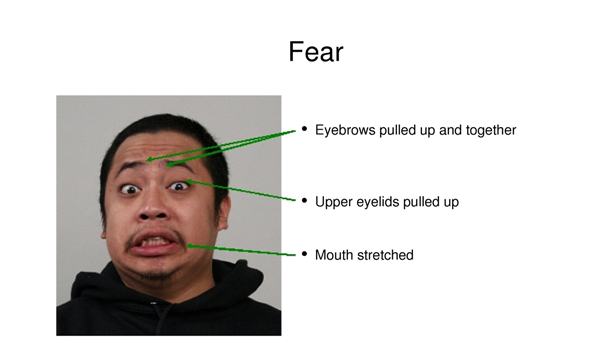
There are other basic emotions such as disgust, contempt, happiness, sadness and surprise. Their characteristics can be seen below:
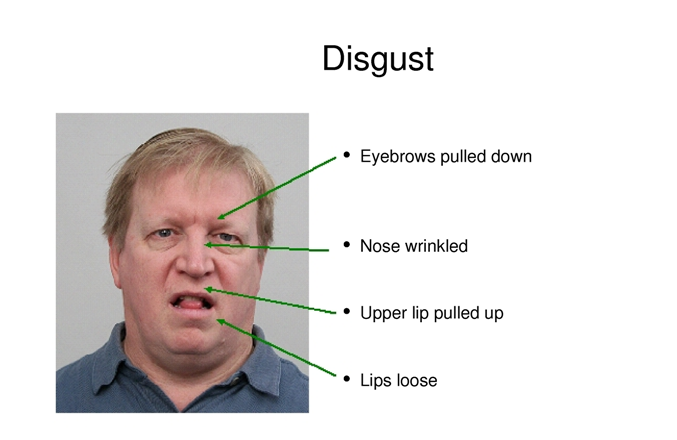
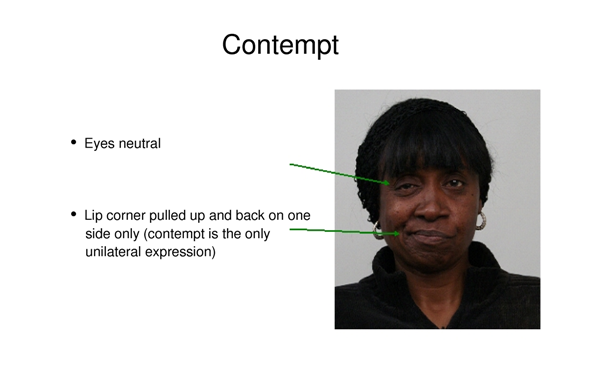
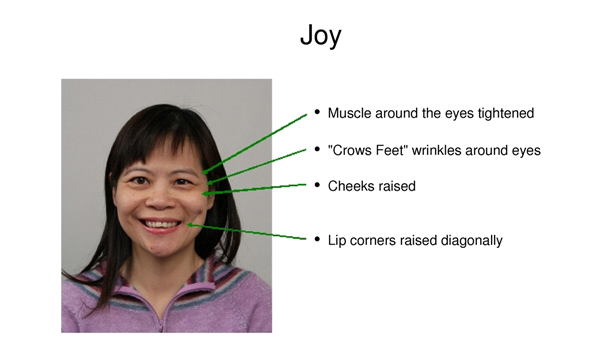
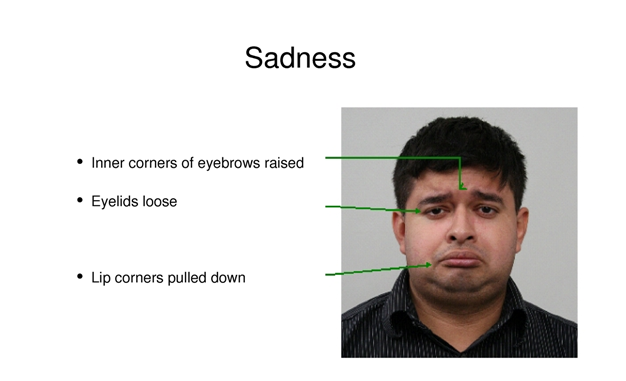
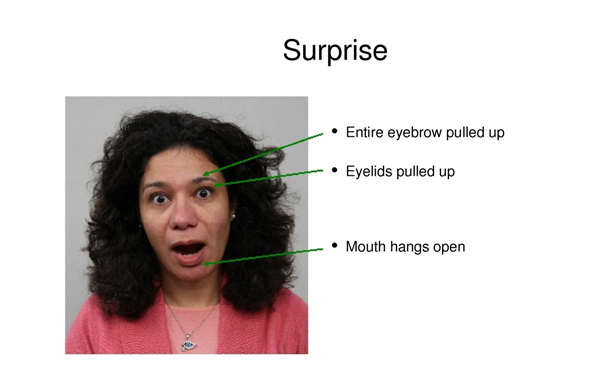
What about other Emotions?
We often get asked about emotions such as shame, pride, jealously and guilt. While these emotions are important ones, they are still not considered part of the basic emotions set.  For example, there is no scientific evidence showing that there is a universal facial expression of shame.
For example, there is no scientific evidence showing that there is a universal facial expression of shame.
However, recent research has shown there are facial and corresponding body movements that may be universal for triumph, shame, and embarrassment.
Research of the last two decades have furthered our understanding of facial expressions, emotions and nonverbal behavior.
Much of this research has linked facial expressions with other nonverbal channels – gaze, head, and whole body movements – to express emotions across cultures, such as shame and embarrassment, love, gratitude, sympathy, pride, and triumph.
Read more about our research on triumph here.
Proceed With Caution…
Be wary when you see or hear people labeling other expressions as universal emotions that are not in the basic emotion set. There is little evidence backing up their claims.
To learn the latest updates regarding The Universality of Facial Expressions of Emotion, check out the blog post below
The Universality of Facial Expressions of Emotion, An Update
*Please note that the images used in this blog post are property of Humintell. Duplicating or using these images for any purpose is strictly prohibited without written consent of Humintell.
I have done the training on the 7 basic emotions and found it very valuable. I think HumIntell has done a great job offering this and other training products.
I will say, that I am disappointed with the blog however. I find that information in the articles is sparse to non-existent. I would have expected to find information, research papers, and more discussions on micro-expressions. While there is some, overall I find it disappointing. For example, in this post you mention shame, pride, jealously and guilt. It might be nice to share research you are currently doing, or general discussion about these other emotions.
In general, I am finding that there are other sites that seem to foster more learning, examples, and discussion — which is great. Disappointing for HumIntell in my opinion.
I am still following, but I wouldn’t rate this blog number one in this area, which is a bit of a surprise to me.
Michael, Thanks so much for your feedback and suggestions. We appreciate your comments and will take them into consideration. Please know that there have been very limited amounts of literature and research that have been published in scientific, peer reviewed journals on the topic of microexpressions. However, we understand the need and desire to have more exposure to this field and will, to the best of our ability, to provide this information to you.
Michael, you may find this article interesting. Although published in 2006, it suggests that the emotion of pride is perhaps more of a basic emotion than we think: http://www.apa.org/monitor/mar06/pride.aspx
I have recently started my training in micro-expressions for help in my military career and I find it fascinating. I feel the web-site has helped me understand more about the prospects of micro-expressions and it has helped me realize how many options there are for me to learn.
Dr. Matsumoto:
What do you consider the look of Hatred in the eyes, 7+43 ? I always assumed that was Contempt.
I have found that the raising of a single eyebrow is not listed in any informative websites. Have there been research into the raising of the single eyebrow raise as I have been doing some intense research.
I am having volunteers participate in an experiment to see if if this could be a contemptuous emotion or a subtle wink.
My findings have shown that this could be either of the two and I feel that it is an indicator of truthfulness as I have never seen anyone lie to me in my scientific and personnel research. I will soon be posting my finding on my blog, but I would like to know if there is already some research in this expression.
follow my blog at
examiningdeception.blogspot.com
Ben, I would not consider 7+43 to be hatred. I would say that 43 is not usually associated with any expression in the anger family. My speculation that hatred would be something like 7+23 or 7+24 but you should know that there has been no data to back up a certain universal expression of hatred.
Ben M, There has been no data to suggest that the raising of one eyebrow is associated with any emotion in particular. I would say that it is more of an emblem that represents some sort of questioning when used.
David Matsumoto, the idea of it being an emblem of curiosity, doubt, or any other related synonym did cross my mind, but, I can not convince myself that this is it’s meaning. I have had people tell me factual and emotional information that they (should) strongly believe in being the truth.
I MAY have detected self-doubt, but this could also be in cause of the fact that they could be thinking of their lie at the same time because I did two truths and one lie. Even though this game is of minimal stakes, they still need to present a lie. This pausing is possibly them trying to figure out what or how they’re going to say their lie. I was able to get an accuracy of 93% as a finishing result.
I did an experiment with some of my untrained peers in facial expressions on what they thought this may mean. I found that they assumed this to be surprise as I had given them cards of Tim Roth’s universal emotions pictures from Fox’s TV show “Lie to Me”. I then measured the facial actions speed and duration. With some commonsense, I concluded that it to be too slow to be surprise, nor does the person revert to display any other emotion as surprise would usually do. So, there is some confusion in it being related to surprise amongst people.
I can state that this may mean that, but I would assume that there would be some, if not slight lowering in the opposite eyebrow.
You may also be correct as it is probably an emblem. I do not live in the United Stats, I live a bit more up north in Canada and I can say that as an emblem, it may mean curiosity, doubt, etc. in the US, but in Canadian culture, I would determine it a subtle wink or, if I want to get a bit more philosophical, an indicator of contempt, which is I feel, unlikely, but can be argued.
My fourth paragraph should be connected to my first paragraph, I am referring to the curiosity, doubt, questioning-ish emblem
Whenever I think of a single eyebrow raise, I think of Spock in the original Star Trek series. When I’ve seen real people do it (those who are able to, many people can’t), it seems to indicate questioning, being inquisitive. I don’t think I’ve ever seen it as an emotional response. But I’m a novice, with very little training or education in the matter, not a professional in any capacity.
Keith, I am considering this, but raising eyebrows can be a greeting. Usually with the our “inqisitive” emblem, that usually happens when you also lower the opposite eybrow (raise left eyebrow – lower right eyebrow).
When people show a duchenne smile with the inquisitive emblem, it would mean that they’re showing this subtle wink.
I stated that in comment number nine, I had run an experiment to see if it is of an emotional origin. the results came back negative and no emotional regognition should be obtained from this.
I have seen this happen at the micro speed (check out my website and watch Julian’s third fact). This shows that it is subconscous, so what does it mean? The ability to question, like in his video, would be conscious, not subconcous and also does not determine why every time I see it, its the truth.
I feel that research is definitly needed for this expression, but as you have said Keith, this emblem may mean inquisitveness AND/or thuthfulness.
The contempt picture says: Eyes neutral, while one of the eyes is pulled together. Am i missing some info?
Hi Laguna, Thanks for your comment. Sometimes with contempt the eye corresponding to the same side that the lip corner is being tightened may become smaller. However, usually, contempt can be seen when the eyes are neutral. Its just a unilateral tightening of the lips.
Laguna: That is more of an exaggerated expression, and it is forced. Yes, eyes should be neutral in contempt, but when you FORCE the corner muscles of your mouth up like that, the eyes will squint.
so we can’t use these images what soever?
it reminds me to lie to me thanks it was helpful i want to learn them
thanks, for your help really i got a helpful information here.
Hi. I sent an email to info@humintell.com regarding permission to use the facial images on this page in a school presentation. Figured I’d give a heads up on here. Thanks
i need the bacground musics for these emotions
I think this article is completely wrong people do not wear emotions like a mask. this article is making something very complicated and trying to simplify it. it doe not go into what other ways people can show emotions. i just feel that that there is so much more that can be said about emotions.
I think that the premise that your most basic emotions will be expressed in your facial appearance is not one that I accept. It is my opinion that there is a survival strategy for certain emotions to be hidden.
I believe what is lacking in this list of emotions is an emotion that affects our decisions on the pace of thinking. I would see confusion as the key emotion for this. I also consider sadness and joy to be correlated as positive and negative measures of the same variable and so I would remove joy if I was trying to keep the emotions down to key categories of emotions. Otherwise I would extend the emotions to 14 or 28 emotions depending on how a basic emotion is defined.
While confusion is often seen related to thinking and not to feeling, my argument is that confusion is correlated to an awareness of risk which motivates us to search just like fear is an awareness of risk that motivates us to fly and anger is an awareness of risk that motivates us to fight. I consider that as confusion is an awareness of risk that motivates us to change our behaviour, it is an emotion.
I think the examples right there is not sufficient means that it is not complete example, but i rather appreciate also because it is helpful to know and understand it.
I practiced and really understanable emotions ,
you are doing a great job
cool
The single eye brow raise (made famous by Spock on Star Trek) represents half a surprise expression much like contempt represents half a smile. It seems to occur when something is learned that unexpected or doubted. The surprise being that the information is either unexpected or its apparent falsity is a mild shock. There is a strong cognitive component to the single eyebrow raise because it requires analysis of information to generate the surprise impulse. So it is closer to an emblem like a shoulder shrug and is likely controlled by cortical areas of the brain. I would also expect that the single eyebrow raise has no micro-expression component since it is generated by the cortical brain as opposed to the limbic system. I also doubt that hate would have a particular facial expression much like love doesn’t have a particular expression. Hate and love are complex mixes of multiple emotions combined with long term cognitive deliberate influence. By definition emotions are temporary responses to external or internal stimuli which are not planned and occur independent of conscious thoughts and generally occur before conscious realization. The feeling of an emotion is actually a slightly delayed awareness of internal bodily changes triggered by the reptilian-limbic brain systems. You don’t run from the bear because you’re afraid, you’re afraid because you ran from the bear. Hate and love are long term and can even be permanent. There is a strong cognitive component to these feelings. Hate is unique in that it requires the identification of a human cause to something perceived as an existential threat. This process is cognitive in nature. They seem to generate a variety of secondary emotions. Think of all the more basic emotions associated with love: anger, envy, jealousy, guilt, shame, lust. There is much calculation involved in hate and love. The complexity of these feelings and their strong cognitive component means that the neural mechanisms involved in generating particular facial expressions of simple, pure emotions are not applicable.
I had recently written an article on my blog regarding the benefits/drawbacks of Anger as an emotion. Your article was very helpful in providing a better insight into the human emotions.
Thanks
http://humanquirks.com/index.php/2015/05/22/someone-creates-anger/